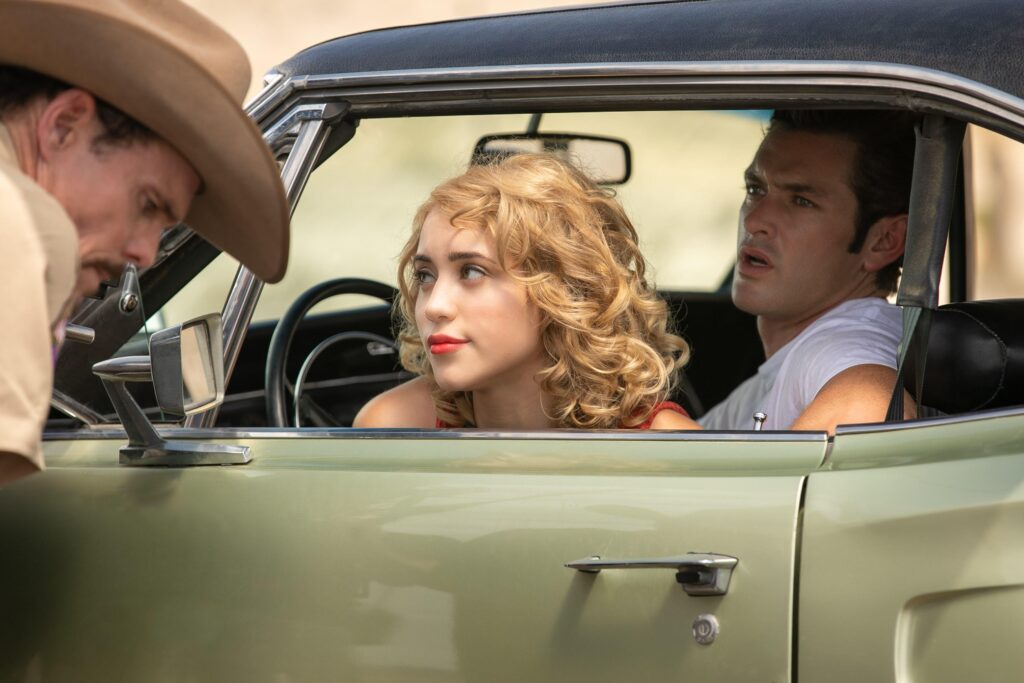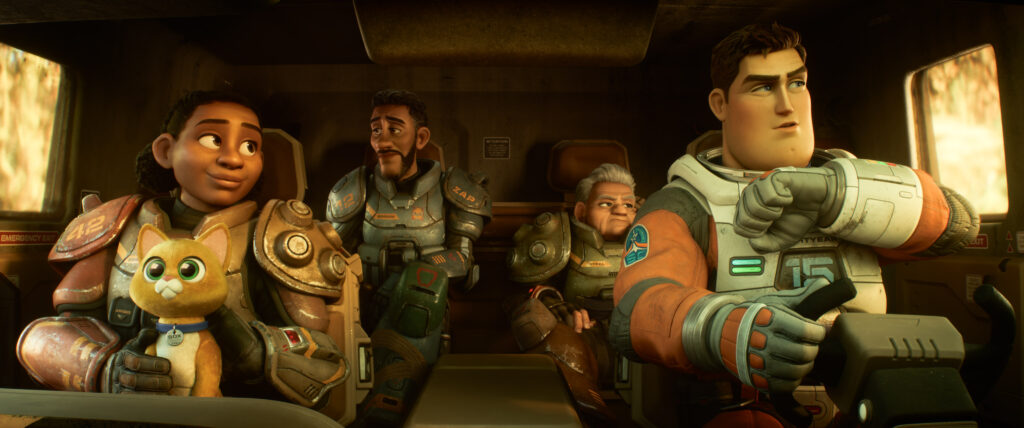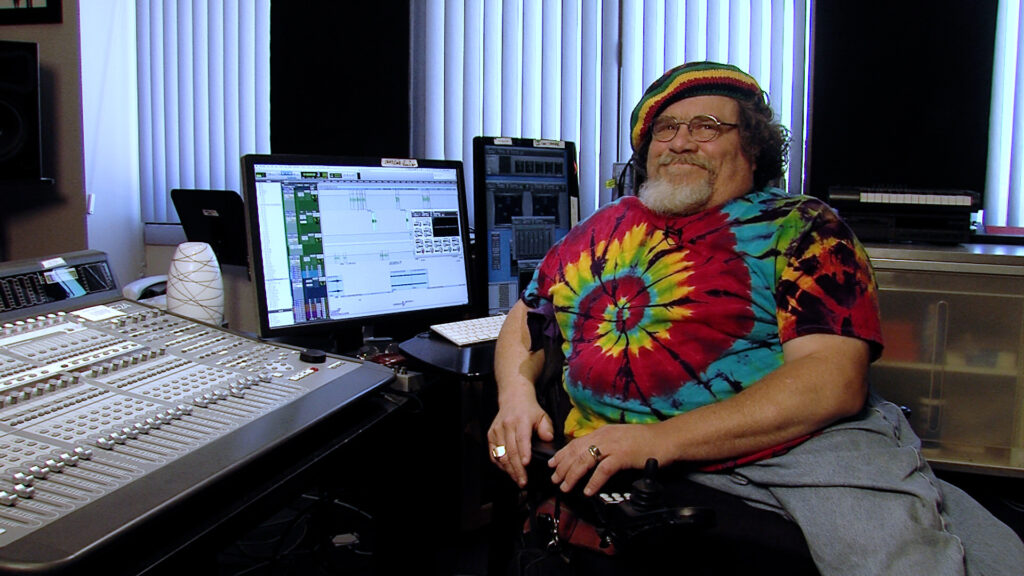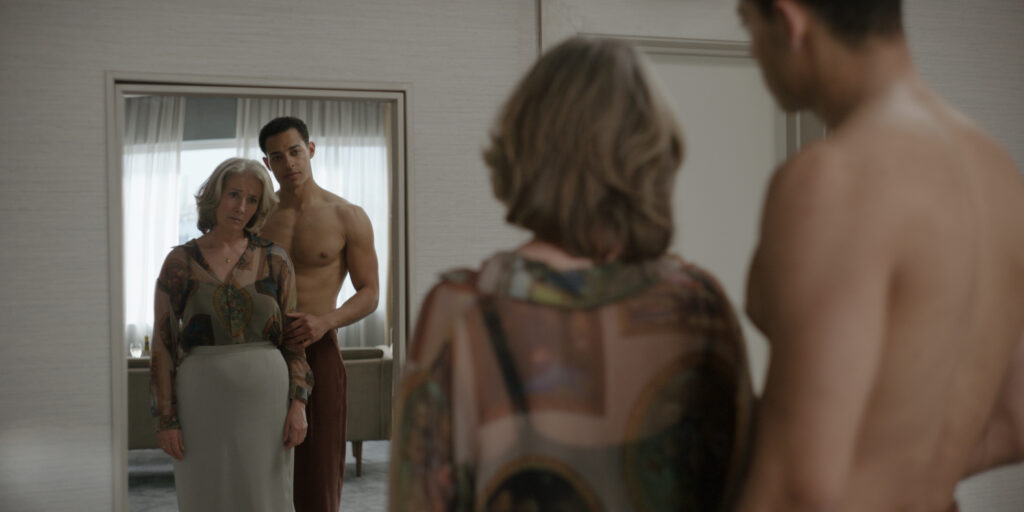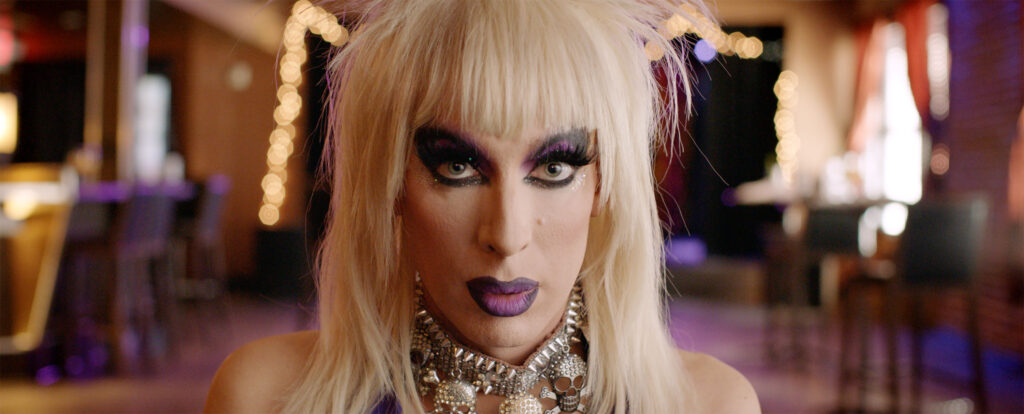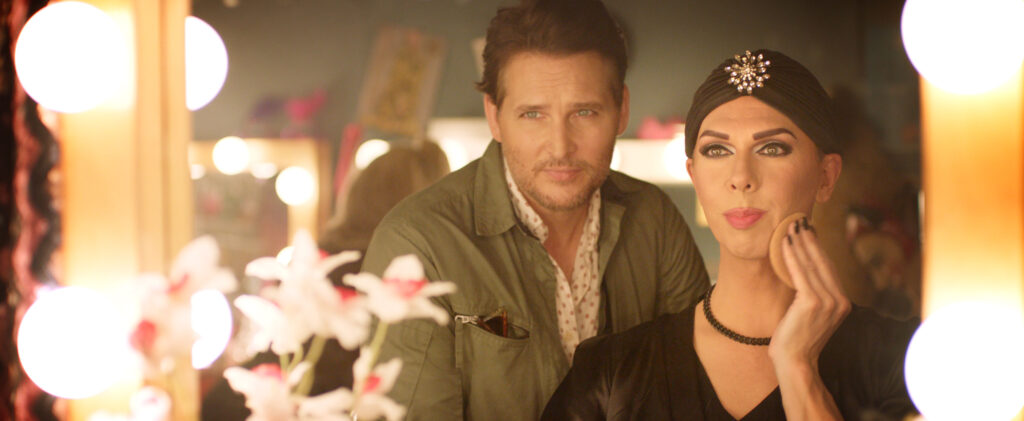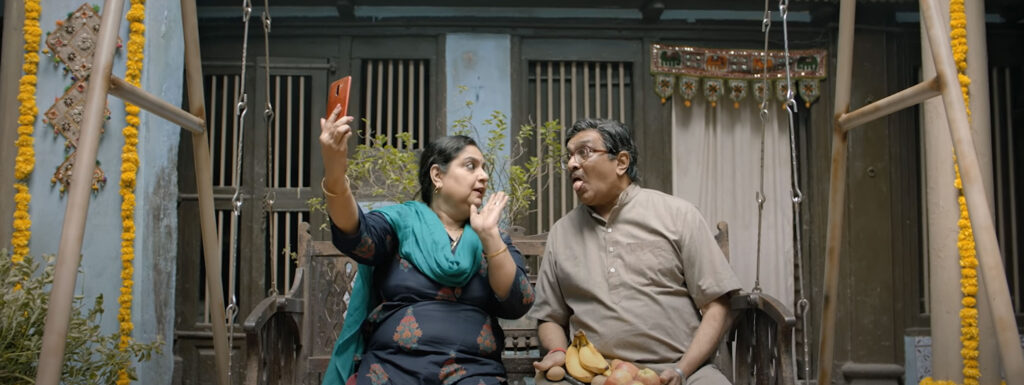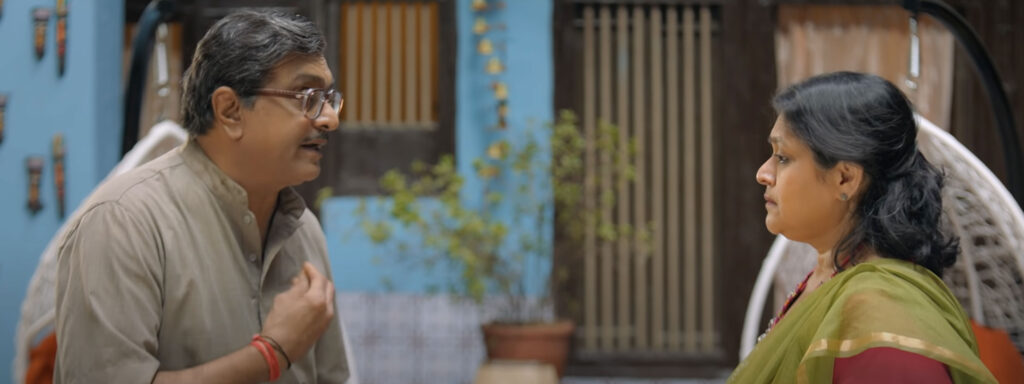June 17, 2022
by Carla Hay
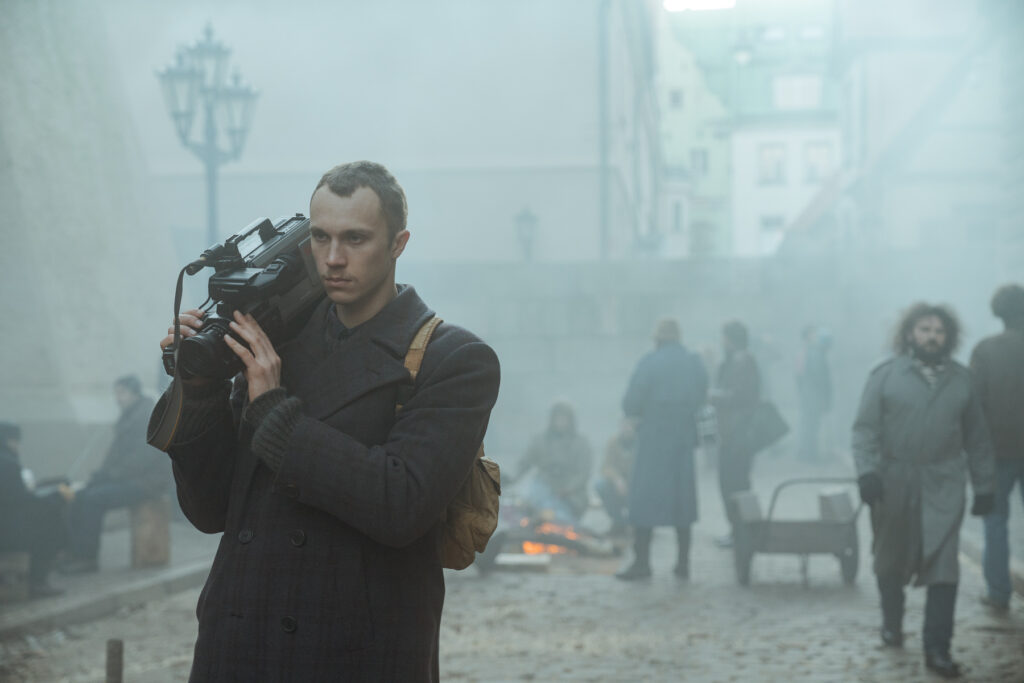
“January” (2022)
Directed by Viesturs Kairiss
Latvian with subtitles
Culture Representation: Taking place in Latvia (mainly in the city of Riga), in January 1991, the dramatic film “January” features an all-white cast of characters representing the working-class and middle-class.
Culture Clash: A 19-year-old film student finds his artistic and political awakening during the Soviet Union’s attempts to forcibly occupy Latvia.
Culture Audience: “January” will appeal mainly to people who are interested in watching coming-of-age stories that take place during political unrest.

“January” is a “slow-burn” character study taking place during Latvia’s January 1991 political conflicts with the Soviet Union. This well-acted coming-of-age story about an aspiring filmmaker fares better with its historical context than with its dull romance. People who see “January” are better-off knowing in advance that the film has a meandering quality that reflects the movie’s protaganist being undecided about what he is going to do with his life. Therefore, viewers who are expecting the movie to have a lot of snappy dialogue or suspense-filled scenes will be very disappointed.
Instead, “January” takes a more realistic tone in depicting one month in the restless life of a 19-year-old aspiring filmmaker, who unexpectedly finds his artistic voice during the Soviet Union’s violent attempted takeover of Latvia. “January” director Viesturs Kairiss says the movie was largely inspired by his own life: He was also a 19-year-old aspiring filmmaker in Lativia in January 1991.
Kairiss co-wrote the “January” screenplay with Andris Feldmanis and Livia Ulman. “January” had its world premiere at the 2022 Tribeca Film Festival, where it won the jury prize for Best International Narrative Feature. “January” has an artistic touch with recreations of Super 8 footage playbacks for the most nostalgic-looking scenes.
In “January,” the 19-year-old protagonist is named Jazis (played by Karlis Arnolds Avots), who is an only child still living with his parents in his hometown of Riga, Latvia. His mother Biruta (played by Baiba Broka) is a strong-willed and outspoken anti-Communist. His father Andrejs (played by Aleksas Kazanavicius) is a more laid-back parent and a member of the Communist Party. At the time this story takes place, Latvia’s Supreme Council had declared Latvia’s restored independence from the Communist Party-controlled Soviet Union less than a year earlier, in May 1990.
It’s later revealed in the movie that Jazis’ birth name is actually Jāzeps. His mother and maternal grandfather secretly had a Christian baptism for Jazis/Jāzeps because they didn’t want Communist member Andrejs to find out. The different political beliefs of Biruta and Andrejs cause some tension in their marriage, but it’s not bad enough where the spouses want to break up. Andrejs tells Jazis in an early scene, “I didn’t go to Moscow because you were born,” implying that Andrejs wanted to move to Moscow, but he agreed to Biruta’s wish to raise Jazis in Latvia.
In the beginning of the movie, it’s shown that Biruta is worried for Jazis and his future, since Jazis is not quite sure what he wants to do with his life. She tells him that he’s better off being enrolled in a university so that he we won’t be conscripted by the Soviet Army. Because “January” shows only one month in the life of Jazis, it’s implied that Jazis was already enrolled as a college student but perhaps was thinking about dropping out.
Jazis is currently a student at an unnamed arts university that has limited resources when it comes to filmmaking. The students have to make do with their own cameras, if they’re lucky enough to have a camera. Jazis is shown taking an acting class, where one of the sessions is about acting like an animal. The unnamed, middle-aged male teacher (played by Artūrs Skrastiņš) randomly chooses students in the class to act out these exercises.
Jazis is told to act like “a whale cast on the sea shore.” Jazis’ moaning “beached whale” performance on the floor results in many of the students laughing at him—and not in a good way. The teacher also gives some criticism of Jazis’ performance for not being very believable. When the teacher asks a female student to act like a kitten drinking milk from a cup, she crawls on all fours, makes a purring sound, and starts rubbing herself against the teacher’s legs, while he smiles in delight and praises her performance. Many of the students walk out in protest because they think the teacher’s reaction shows sexist manipulation of this female student.
Jazis has a male friend at the school named Zeps (played by Sandis Runge), whose importance to the story fades away when the movie heads into a somewhat predictable direction of making Jazis fall for a more popular female student. Her name is Anna (played by Alise Danovska), who hangs out with a group of artistic rebels, some of whom go to the same school. She’s part of the group of students who walk out of the acting class and taunt Jazis in the hallway over his “beached whale” acting performance.
Jazis doesn’t care about being an actor. He wants to be a director, but he’s not quite sure what types of movies he wants to make. There’s a scene in “January” showing him going to a makeshift video store and renting a tape of filmmaker Jim Jarmusch’s 1984 movie “Stranger Than Paradise.” It’s an indication that he’s a fan of unconventional independent filmmakers.
Jazis may not know yet what type of movies he wants to make, but he’s first shown using his hand-held camera for another type of filming: video journalism. Jazis is fascinated by filming the soldiers of the Soviet Union’s OMON (a special police branch of the National Guard of Russia) that have become an increasing presence in Latvia. Whenever the OMON soldiers see Jazis filming them, they react angrily by demanding that he stop filming and sometimes by physically assaulting him.
Jazis comes home after one of these assaults and wears the cuts and bruises on his face almost like badges of honor. When his mother asks Jazis how he got hurt, he tells her. She’s concerned, but she also considers herself to be an outspoken resistor to any Soviet takeover of Latvia. Biruta is later shown participating in peaceful citizen protests against the Soviet Union’s attempts to control Latvia.
Jazis’ unwillingness to be intimidated by these OMON soldiers is the first indication that he won’t let obstacles get in his way when he wants to film something. It’s also the start of what will become his political awakening as the OMON and other Soviet military presence in Latvia become more ominous and more violent. However, the movie doesn’t have a predictable story arc of Jazis getting this political awakening.
Jazis doesn’t attend activist meetings. He doesn’t talk about politics too much with his mother, who has beliefs that are more in line with what Jazis believes, since Jazis definitely does not want to become a Communist. Nor does Jazis want to join a political party.
Instead, in this one-month period, Jazis arrives at a better understanding of the world and what he wants to do with his life through his love of filmmaking. His decision on what type of filmmaking career path to take is still undefined, and it’s tangled up in his romantic feelings for Anna, who eventually takes a liking to him too.
Jazis and Anna discover this mutual attraction when Jazis invites her to a family house party, where she meets his parents. Anna and Jazis end up dancing at the party. Eventually, Anna opens up to Jazis about her family and her life goals.
Anna lives with her mother and stepfather, whom she says is not a Communist. “He supports the independence movement,” Anna comments about her stepfather. Anna tells Jazis that her biological father died of alcoholism. Her biggest goal in life is to make movies.
Jazis starts hanging out more with Anna and her rebellious friends. She even changes his hairstyle to look more punk rock, with his hair fluffed out and greased up into a Mohawk-inspired look. Later in the movie, Jazis gets his hair cut at around time he becomes more concerned about the violence happening around him. This haircut is the movie’s symbolic way of showing development in Jazis’ maturity.
Anna and her clique aren’t true anarchists. They mostly talk about being anti-establishment, and they make some annoying but harmless mischief. For example, there’s a scene where Anna, Jazis and her friends are hanging out a food court, when she and some of the friends start grabbing and eating food from other people’s plates before being chased away. Jazis doesn’t participate in these shenanigans. He always seems like a little bit of an outsider at these get-togethers.
Eventually, Anna and Jazis become sexually intimate, but their first sexual encounter together is less than romantic, since he has “performance issues” and seems to be very inexperienced. “January” tends to falter in depicting this budding romance, because Anna and Jazis don’t really have any meaningful conversations with each other outside of their interest in filmmaking. Anna seems more willing to be open about her feelings than Jazis, who always seems to be holding back on showing who he really is when he’s with her.
Therefore, people with enough life experience can see that what Jazis and Anna have isn’t real love. It’s a mutual attraction that stops and starts intermittently. However, it seems like the “January” filmmakers want to convince viewers that Anna and Jazis’ relationship is an impactful “love story,” when it’s really just a teenage crush. The “romance” in this film is actually quite monotonous and not as meaningful as it could have been.
Anna has been developing her skills as a filmmaker by doing music videos. One day a semi-famous director named Juris Podnieks (played by Juhan Ulfsa) comes to the school to look at the students’ work. Juris is so impressed with Anna’s work that he immediately offers her a job working for him as an assistant. She eagerly accepts.
But you know what that means: Jazis gets jealous, although he tries to pretend that he isn’t jealous. At first, he congratulates Anna, who seems so relieved that he’s not angry, she hugs him. However, at a party to celebrate Anna’s new job, Jazis sulks on a couch.
And later, Jazis shows up unannounced when Anna is supposed to leave with Juris and other co-workers for a film shoot. Jazis accuses Anna and Juris of getting romantically involved. Anna angrily denies it and tells Jazis that he’s acting like a paranoid lover. Jazis even tries to block her from getting in the car where Juris and her co-workers are witnessing this conflict. This argument is another turning point in Jazis and Anna’s bumpy relationship.
Because “January” takes a realism approach to showing this month in the life of Jazis, not everything in the movie is compelling drama, just like in real life. There are stretches of the movie where not much happens except Jazis moping around and doing some filming here and there. The best scenes in “January” are those that involve Jazis becoming more enlightened about the stakes involved in Latvian freedom and the sacrifices that Latvian residents have to make to fight for that freedom.
The emotional crediblity of “January” is largely dependent on Avots’ performance as Jazis. Avots does a very good job of portraying the late-teens angst of someone who is old enough to legally be an adult but might not be emotionally mature enough to make adult decisions. Danovska’s nuanced and admirable performance as Anna indicates that there could’ve been potential to develop this character beyond just being the protagonist’s love interest.
Because “January” spends a great deal of screen time on the relationship between Jazis and Anna, opinions about “January” might vary, depending on how viewers feel about Anna and Jazis being a couple. It’s impossible not to notice that Jazis and Anna’s romance doesn’t have a lot of convincing passion or a deep emotional connection. Jazis’ jealous streak is also an indication that Jazis and Anna ultimately aren’t right for each other, since he’s already showing signs of being enviously competitive with her as a filmmaker.
Fortunately, “January” doesn’t veer too far off-course into Jazis and Anna’s topsy-turvy relationship. The movie is essentially about Jazis thinking that his earliest filmmaking experiences would be making short student films, but instead his earliest filmmaking experiences ended up documenting the increasing political terror around him. Someone’s life shouldn’t be defined by just one month, but “January” shows in effective ways how one month can change the course of someone’s life.







